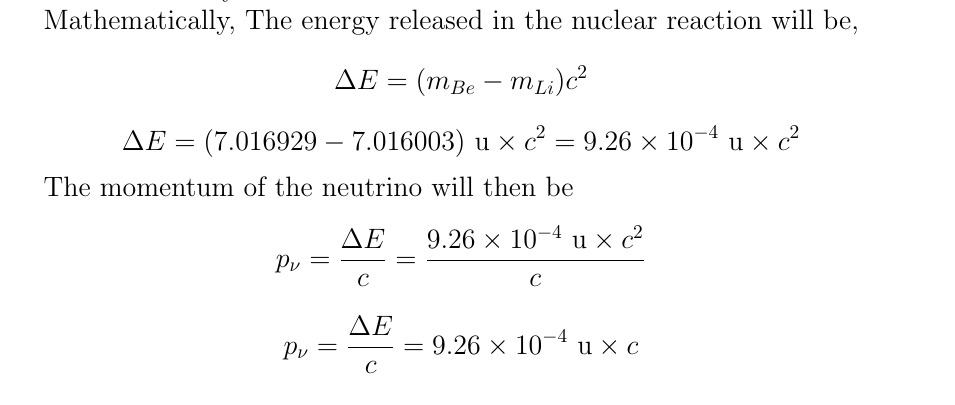
In electron capture the energy of the electron is absorbed/distributed through the weak force, by the interaction products, but in order to obey lepton number conservation an electron neutrino has to carry the electron lepton number.Īll these rules have come out of observations of innumerable data, and the standard model symmetries which carry the quantum number conservation laws in the group structure (SU(3)xSU(2)xU(1) )is still the current model of particle physics. And there are rules of what happens during interactions with the given forces in the interactions. And of course the quantum mechanical equations of the state of the system, given by the solution of the appropirate quantum mechanical differential equations. These QM rules are :energy, momentum and angular momentum conservation (spins included in the conservation), conservation of lepton number, baryon number ( all in the table in the link), conservation of charge. Their masses are fixed at the time of the universe we are living in.

The particles i n the table are characterized by their quantum numbers. They do not obey the classical mechanics intuitions. So how can someone says the neutrino is the converted electron even though it was rather stripped? Why not say there has been a redistribution of the "reactants"?Įlementary particles, and the electron is an elementary particle in the standard model of physics are different than classical particles. This is clearly oversimplistic to just compare rest masses, as energy can be in other forms, yet I just add it as an illustration of what I am asking about, because there is more mass in the neutron than in the proton. So I assumed a part of the electron is stored in the neutron (again, not as Russian dolls).Įlectron mass 0.000910938356(11)×10−27 kg

the electron was actually converted to a neutrino.īut the neutrino of the electron capture does not contain the same amount of energy the incoming electron did. the final neutron does not contain the electron, and 2. In the parent question, I was told that during electron capture, 1. This is about electron capture and neutron decay, and what happens to the electron between two such events. Beams 12, 084201 (2009)Ī.Parent question: What came first, neutrons or electrons? Wagner, Dirac-Fock-Slater X-ray Energy Shifts and Electron Binding Energy Changes for All Ion Ground States in Elements up to Uranium, Preprint ZfK-574, (Zentralinstitut für Kernforschung, Rossendorf bei Dresden, 1986) 6(IOP Publishing and IAEA, Bristol, 2007) Ikeda, Progress in the ITER Physics Basics, Nuclear Fusion, vol. Spiller, Internal Note ACC-Note-Internal-2006-001(GSI, Darmstadt, 2006) (Lebedev Physical Institute, Moscow, 2011)

Voitkiv, Excitation and Loss of Multicharged Ions in Relativistic Collisions with Atoms. Ozaki et al., Report NIFS-DATA-102 (NIFS, Toki, Japan 2008)į. Madsen, Vacuum changes during accumulations of Pb 54+ in LEIR. Angert et al., GSI/CERN collaboration (1993, unpublished) Erb, GSI Report GSI-P-78, (Darmstadt, Germany 1978)ī. Smirnov, Reference Data on Atomic Physics and Atomic Processes(Springer, Berlin, 2008) Ullrich, Collisions of Structured Atomic Particles(Springer, Berlin, 2008)ī.M. Shevelko (ed.), Atomic Physics with Heavy Ions(Springer, Berlin, 1999)Ī. Rivarola, Electron Emission in Heavy-Ion-Atom Collisions(Springer, Berlin 1997)

Meyerhof, Relativistic Atomic Collisions(Academic Press, New York, 1995) Shevelko, Physics of Highly Charged Ions(Springer, Berlin, 1985)


 0 kommentar(er)
0 kommentar(er)
